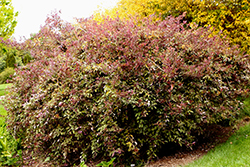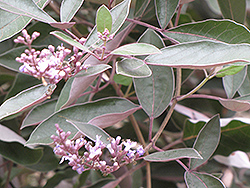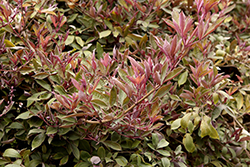It's all about ...
plants

Height: 18 feet
Spread: 15 feet
Sunlight:
![]()
![]()
Hardiness Zone: (annual)
Other Names: Trifoliate Chastetree, Simpleleaf Chastetree
Description:
A large shrub featuring aromatic foliage that emerges reddish-purple and turns gray-green with purple undersides; lavender flowers produced most abundantly in mid-summer, followed by black berries; a great tall hedge or screen, or prune as a small tree
Ornamental Features
Arabian Lilac has panicles of fragrant lavender flowers rising above the foliage from early spring to late fall. Its fragrant compound leaves emerge purple in spring, turning grayish green in colour with curious lavender undersides the rest of the year. It produces black berries in late summer.
Landscape Attributes
Arabian Lilac is an open multi-stemmed annual with an upright spreading habit of growth. Its relatively fine texture sets it apart from other garden plants with less refined foliage.
This plant will require occasional maintenance and upkeep, and is best pruned in late winter once the threat of extreme cold has passed. It is a good choice for attracting butterflies to your yard. It has no significant negative characteristics.
Arabian Lilac is recommended for the following landscape applications;
- Mass Planting
- Hedges/Screening
- General Garden Use
Planting & Growing
Arabian Lilac will grow to be about 18 feet tall at maturity, with a spread of 15 feet. It has a low canopy with a typical clearance of 1 foot from the ground. Although it's not a true annual, this fast-growing plant can be expected to behave as an annual in our climate if left outdoors over the winter, usually needing replacement the following year. As such, gardeners should take into consideration that it will perform differently than it would in its native habitat.
This plant does best in full sun to partial shade. It is very adaptable to both dry and moist locations, and should do just fine under typical garden conditions. It is considered to be drought-tolerant, and thus makes an ideal choice for a low-water garden or xeriscape application. It is not particular as to soil type or pH, and is able to handle environmental salt. It is highly tolerant of urban pollution and will even thrive in inner city environments, and will benefit from being planted in a relatively sheltered location. This is a selected variety of a species not originally from North America.


